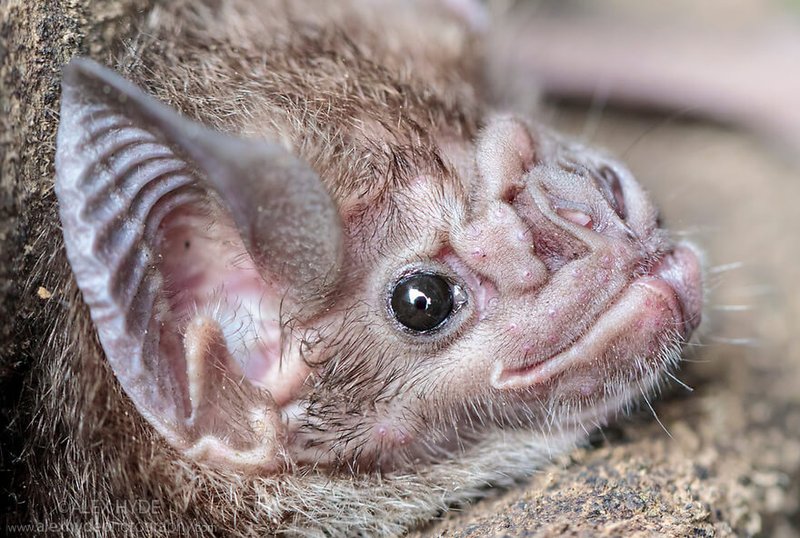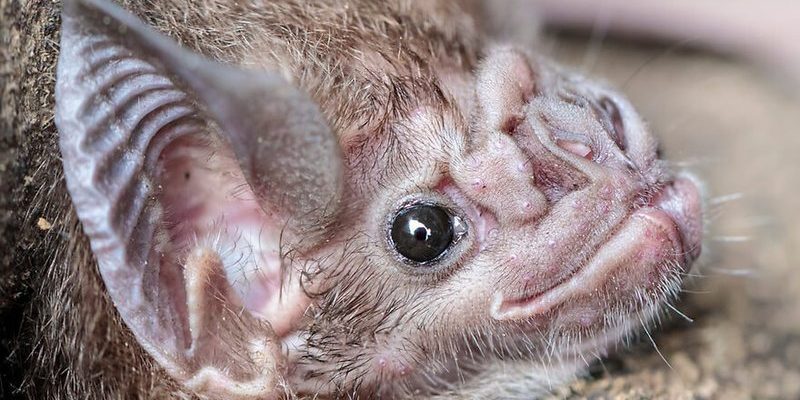
You might picture a vampire bat as a menacing creature, but they play a different role in their ecosystem. While they do consume blood, their biological traits and social behaviors make them fascinating subjects for study. So grab a cozy drink, and let’s dive into some amazing facts about these unique little critters!
1. Unique Feeding Habits
Vampire bats primarily feed on the blood of other animals, a behavior known as hematophagy. Unlike typical mammals, these bats have evolved to consume blood instead of traditional food sources. Using their sharp teeth, they make a small incision on the skin of their prey and lap up the blood. It’s important to note that they don’t drain their victims dry; they generally take only a small amount, allowing their prey to continue living.
What’s even more intriguing is how vampire bats have developed a natural anticoagulant enzyme in their saliva to prevent the blood from clotting while they feed. It’s like nature’s little trick to ensure they can enjoy their meal without interruption. Imagine you’re at a party, and instead of having to keep pouring yourself a drink, you have a magic cup that never empties!
2. Three Main Species
When people talk about vampire bats, they usually refer to three different species: the common vampire bat (*Desmodus rotundus*), the hairy-legged vampire bat (*Diphylla ecaudata*), and the white-winged vampire bat (*Diaemus youngi*). Each species has its own unique traits and preferred prey.
– The common vampire bat is the most well-known, primarily feeding on the blood of mammals like livestock.
– The hairy-legged vampire bat tends to prefer birds, often targeting them for a quick snack.
– The white-winged vampire bat is less common, mostly found in more remote areas and has a slightly different diet compared to its relatives.
This variety adds depth to their role in the ecosystem. By having different feeding preferences, these bats help regulate animal populations and maintain balance within their habitats.
3. Social Creatures
You might think vampire bats are solitary creatures, but they’re surprisingly social! They often roost in large colonies, which can include hundreds of bats. Within these colonies, social mating and cooperative behaviors occur. For instance, if one bat successfully feeds, it may share the blood with others that didn’t manage to find a meal.
This sharing behavior raises some interesting questions about social bonds and reciprocity in the animal kingdom. Imagine having friends willing to share their snacks when you’re hungry—it fundamentally alters the dynamics of the group. In vampire bats, this teamwork is crucial for survival, especially during tough times when finding food is difficult.
4. Exceptional Navigation Skills
Vampire bats have impressive navigation skills, thanks to their keen echolocation abilities. Much like sonar, these bats emit sounds that bounce off objects, helping them determine distances and locate prey. This skill is especially vital when flying through dense forests or dark caves.
Think about how you navigate a crowded room—your senses are heightened as you avoid obstacles and find your way. Vampire bats do something similar in their natural environment. They rely heavily on their hearing and echo feedback to navigate efficiently, especially when it’s dark.
5. Temperature Regulation
Rather than relying solely on the environment to regulate their body temperature, vampire bats maintain their warmth through a process called thermoregulation. They have adapted to control their body temperature by using their circulatory system. When they consume blood, it provides an essential source of energy that helps them maintain their body heat.
This ability to regulate temperature is crucial for these bats, especially since they often feed during the cool, nighttime hours. It’s like wrapping yourself in a warm blanket on a chilly night; it keeps them cozy and active while they hunt.
6. Unique Reproductive Behavior
Vampire bats have a fascinating approach to mating and raising their young. Female vampire bats typically give birth to a single pup after a gestation period of about six to seven months. What’s unique is the cooperative parenting behavior they exhibit. Female bats often help each other care for their young, a practice that strengthens social bonds within the colony.
Imagine a group of friends all pitching in to babysit while others go out. This kind of teamwork not only boosts the survival rates of the young bats but also fosters a sense of community among the adults.
7. The Role in Ecosystem
Though dreaded by some, vampire bats play a significant role in their ecosystems. Through their feeding habits, they help control the populations of larger mammals, thus influencing the health of the overall environment. Each time they feed, they contribute to a natural balancing act, ensuring that no particular species dominates an ecosystem.
It’s like letting a little air out of a balloon; you want it to stay inflated but balanced. Vampire bats contribute to the natural order, encouraging biodiversity and the health of their habitats.
8. Cultural Significance
Vampire bats have been part of folklore and culture for centuries, often depicted as menacing figures in stories and movies. These images can shape our perceptions, leading to fear rather than understanding. However, in many cultures, they symbolize transformation and renewal, often linked to the natural cycle of life and death.
Despite their scary nickname, the truth is that vampire bats are extraordinary animals deserving of respect and understanding. By appreciating their role in nature, we can shift the narrative from fear to fascination.
9. Conservation Status and Threats
Like many species, vampire bats face threats from habitat loss and human interventions. Deforestation for agriculture and urban development reduces their natural habitats, putting their populations at risk. Moreover, the stigma surrounding them can lead to harmful extermination practices.
Conservation efforts are crucial for maintaining their populations and ensuring they continue to play their essential ecological roles. With public education and awareness, we can take steps to protect these amazing creatures, promoting coexistence rather than conflict.
10. Fun Trivia
Lastly, let’s round off our exploration with some quirky trivia about vampire bats:
– Vampire bats can consume up to half their body weight in blood during a single feeding session.
– They have a surprisingly long lifespan, living up to nine years in the wild.
– The common vampire bat’s ability to walk on land is fascinating; they can use their front legs to engage in a little “hopping” to navigate to their next meal.
Isn’t it amazing how much there is to learn about these often-misunderstood creatures? They’re not just bloodsuckers; they’re a vital part of our ecosystem.
In conclusion, vampire bats are a blend of mystery and wonder. By digging into their fascinating behaviors and cultural significance, we can better appreciate their role in our world. So, the next time you hear about vampire bats, remember it’s not just a story of fear; it’s a story of survival, cooperation, and ecological balance. Cheers to these incredible creatures!

